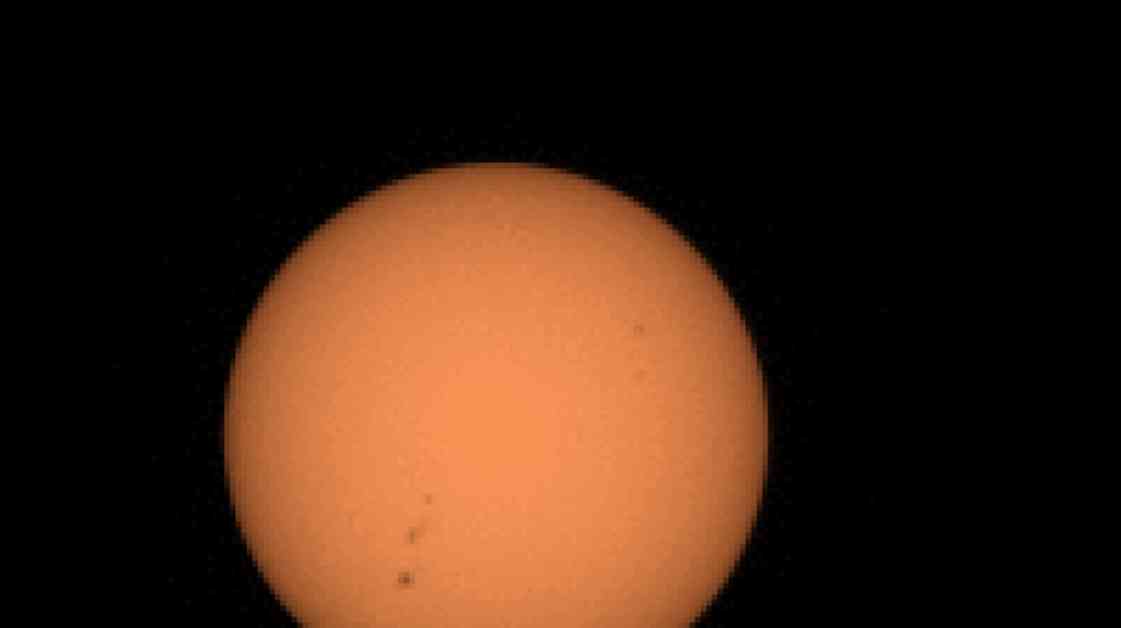NASA’s Perseverance Mars rover had a unique experience recently when the planet’s moon Phobos passed in front of the sun, creating a solar eclipse that looked like a “googly eye.” This event took place on the 1,285th Martian day of Perseverance’s mission while the rover was situated on the western wall of Mars’ Jezero Crater.
Using its Mastcam-Z camera system, Perseverance was able to capture footage of Phobos moving across the sun’s disk, appearing as a small, dark object against the bright sun. This created an interesting visual effect resembling a “googly eye” in the sky above Mars. This is not the first time that Perseverance has witnessed such an event, as Phobos orbits Mars frequently, resulting in more common solar eclipses compared to those on Earth.
Phobos, Mars’ larger moon, is only 17 miles wide at its widest point, making it significantly smaller than Earth’s moon. Its rapid orbit means that a transit of Phobos in front of the sun usually lasts around 30 seconds. The recent video footage shared by NASA shows the eclipse in real time and sped up by four times, providing a unique perspective of the event.
NASA officials explained that due to Phobos’ orbit being nearly aligned with the Martian equator and its close proximity to the planet’s surface, transits of the moon occur frequently throughout the Martian year. This makes it a common occurrence for rovers like Perseverance, Curiosity, and Opportunity to witness such eclipses while on Mars.
Scientists have been studying these eclipse events for the past 20 years to gather information about Phobos and its changing orbit. Phobos is gradually moving closer to Mars at a rate of 6 feet every 100 years, leading to predictions that it will eventually collide with the Red Planet in around 50 million years.
These observations and data collected during solar eclipses on Mars provide valuable insights into the moon’s behavior and evolution over time. By capturing these unique events, NASA is able to deepen our understanding of the Martian moons and their impact on the planet’s future.










